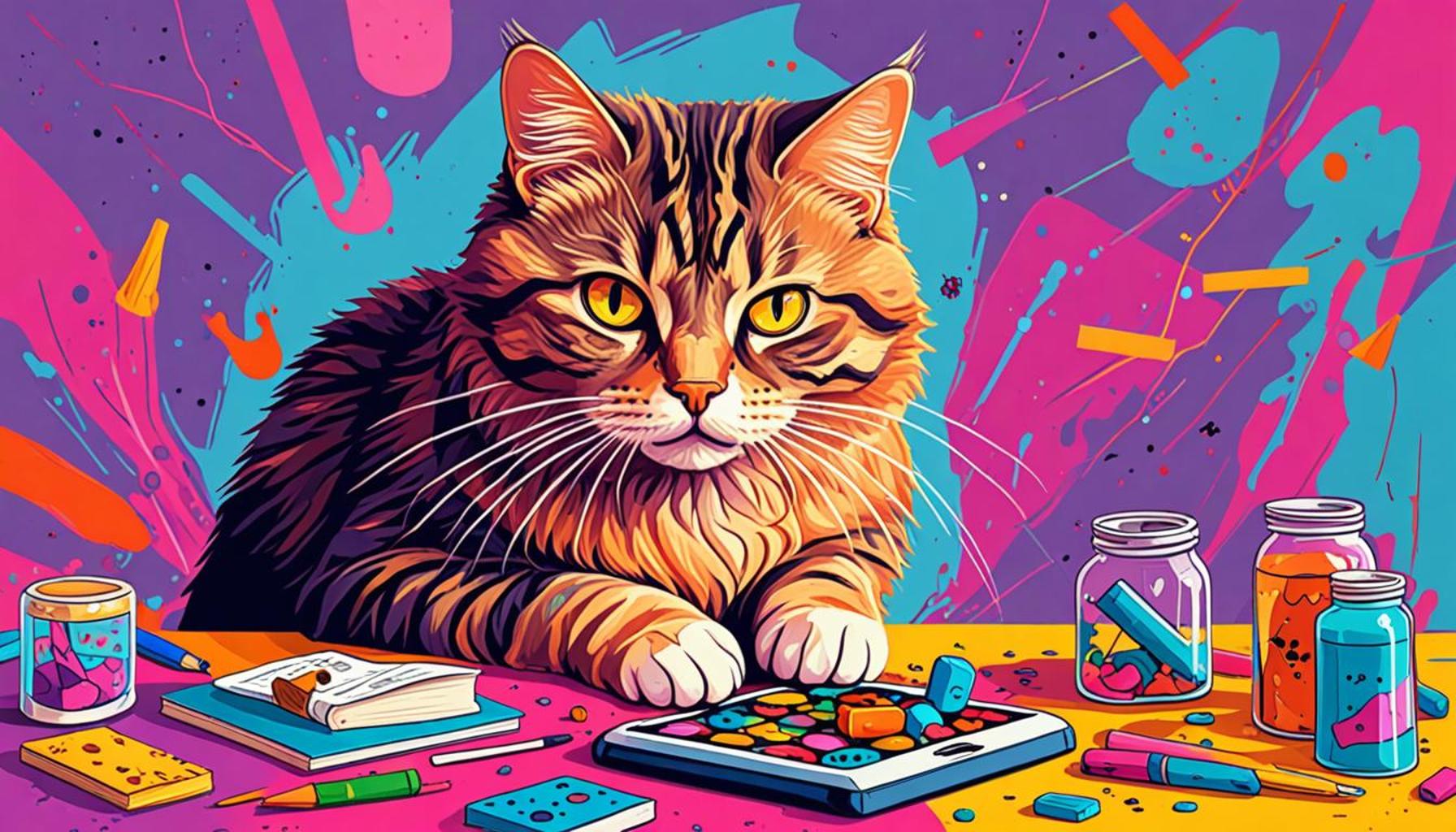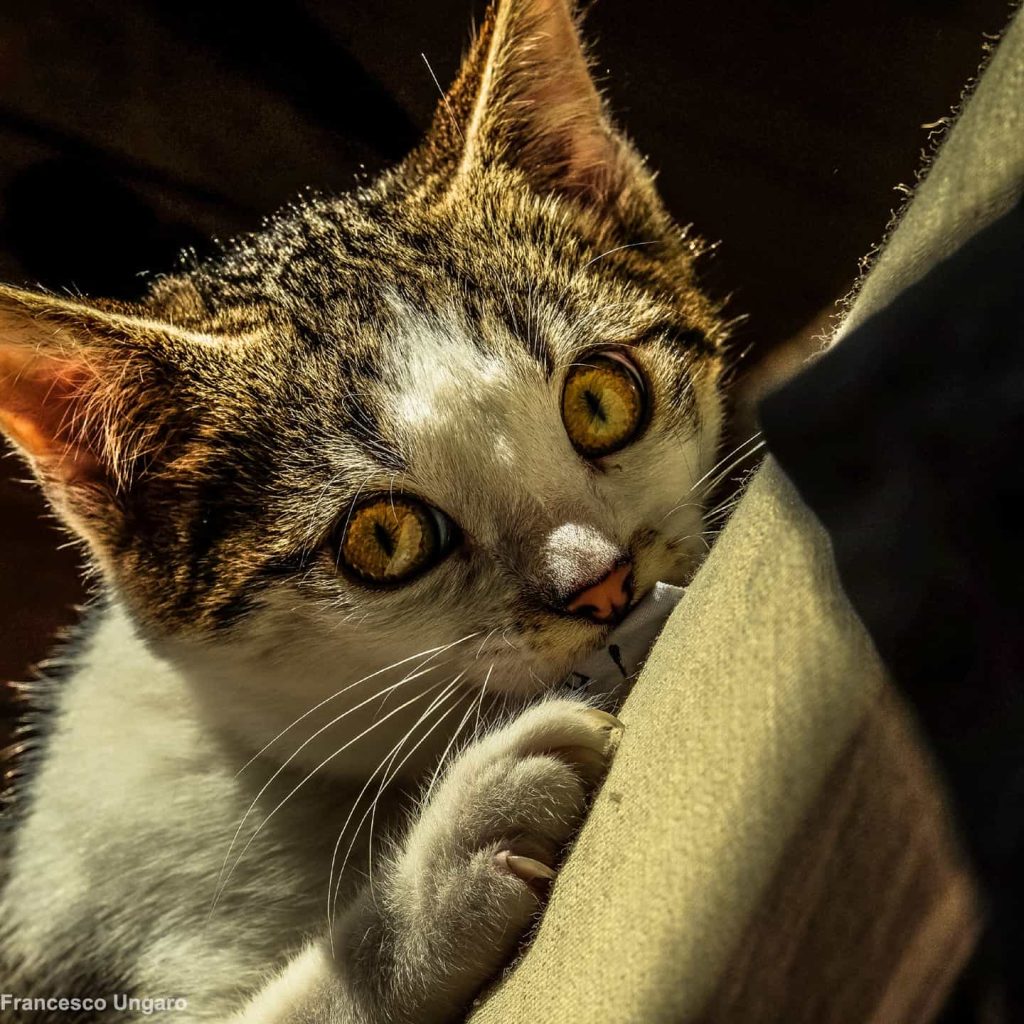Strategies for Dealing with Compulsive Behaviors in Cats

The Puzzle of Compulsive Behaviors in Cats
Understanding your feline friend can sometimes feel like deciphering a complex code. One puzzling aspect of cat behavior is compulsive behaviors, which can range from excessive grooming to tail chasing. Recognizing these behaviors is crucial for ensuring a happy and healthy life for your cat. In many cases, these compulsive actions can arise from stress, boredom, or anxiety, leading to serious implications for a cat’s mental and physical health.
Common Types of Compulsive Behaviors
To effectively support your cat, it’s essential to identify and understand the common types of compulsive behaviors that may appear:
- Excessive Grooming: Cats are known for their grooming habits, but when they groom themselves excessively, it can lead to skin lesions or bald spots. This behavior often stems from anxiety, particularly if the cat is feeling insecure in its environment.
- Chasing Shadows or Lights: Some cats develop a fixation on chasing moving shadows or spots of light. This behavior may seem innocuous, yet it can signal a deeper issue like overstimulation or a lack of mental engagement, leading to frustration.
- Self-Mutilation: A more severe manifestation, self-mutilation can involve biting or scratching at oneself to the point of injury. This behavior is often a cry for help, indicating that the cat is undergoing significant stress or anxiety. It’s essential to address this behavior quickly with the help of a veterinarian.
- Overeating: Overeating can be a perplexing behavior linked to both physical and emotional states. Some cats may eat excessively in response to stress or boredom, resulting in obesity and health complications if not managed properly.
Understanding the Triggers
Each of these compulsive behaviors can significantly impact your cat’s quality of life and may even lead to medical issues. Understanding the triggers is a vital first step in addressing these issues. Important factors to consider include:
- Environmental Stressors: Changes in household dynamics, like a new pet or moving homes, can create anxiety for your cat.
- Changes in Routine: Cats are creatures of habit; sudden changes in their daily routines can result in confusion and stress.
- Lack of Physical and Mental Stimulation: A stimulating environment is crucial for a cat’s well-being. Interactive toys, climbing trees, and regular playtime can help alleviate boredom and reduce compulsive behaviors.
Effective Strategies for Managing Compulsive Behaviors
By implementing targeted strategies, you can help restore your cat’s well-being and enhance your bond. Consider consulting with your veterinarian for a tailored approach that may include changes in diet, medication, or behavioral therapy. In the following sections, we will delve into specific approaches for managing and mitigating these compulsive behaviors effectively, ensuring your furry companion leads a healthier and happier life.
FOR MORE INSIGHT: Click here to learn how to manage behavioral issues in adopted dogs

Effective Strategies for Managing Compulsive Behaviors
Once the triggers of your cat’s compulsive behaviors have been identified, implementing effective strategies becomes essential in creating a calmer, more balanced environment. These tactics can not only mitigate the frequency of compulsive behaviors but also enrich your cat’s quality of life. Here are several key strategies to consider:
- Providing Environmental Enrichment: Ensure your cat’s living space is stimulating. Incorporate interactive toys that challenge their problem-solving skills, such as puzzle feeders and treat-dispensing balls. Additionally, consider adding vertical spaces like cat trees or shelves. Cats naturally love to climb and perch high, which can satisfy their need for exploration and activity.
- Regular Playtime: Set aside dedicated playtime each day to engage your cat in interactive play sessions. Use toys like wands or lasers to encourage your cat to chase and pounce. This not only allows your cat to burn off excess energy but also strengthens your bond with them. Playtime can serve as a crucial outlet for their natural predatory instincts, reducing the likelihood of compulsive actions.
- Establishing a Routine: Cats thrive on consistency. Establishing a daily routine around feeding, play, and interactions can offer stability, reducing anxiety associated with unpredictability. Try to keep feeding times and play sessions at similar times each day, making life more predictable for your feline.
- Using Calming Products: In some cases, calming aids may be beneficial. Products like pheromone diffusers or sprays can create a soothing atmosphere. Additionally, consider soft music or white noise machines specifically designed for pets to mask loud or jarring household noises that may contribute to anxiety.
- Behavioral Training: Consult a qualified animal behaviorist to develop a customized behavioral modification plan. This may involve using clicker training or gentle redirection to guide your cat away from compulsive behaviors and teach alternative, more appropriate activities.
- Regular Veterinary Check-ups: Regular visits to your veterinarian are essential to rule out any underlying medical issues that could be contributing to compulsive behaviors. A vet can provide tailored advice and may recommend specific treatments if behavioral therapies are not enough.
Implementing these strategies can lead to significant improvements in your cat’s well-being. By creating a more enriched environment, maintaining consistency, and seeking professional advice when needed, you can help alleviate compulsive behaviors and promote a healthier, happier lifestyle for your furry companion. Remember that change may take time, and patience is key. Continuous monitoring and adjustments to your strategies will foster the best results in nurturing your cat’s mental and emotional health.
Understanding Compulsive Behaviors in Cats
Compulsive behaviors in cats can be puzzling and distressing for both pets and owners. These behaviors, often referred to as stereotypies, can manifest in various forms such as excessive grooming, repetitive pacing, or sudden bursts of hyperactivity. Understanding the underlying causes of these behaviors is crucial. They can stem from various factors including anxiety, boredom, and environmental stressors. For instance, a lack of stimulation can lead a cat to develop compulsive grooming habits as a way to relieve boredom.
Identifying Triggers
Recognizing the triggers of your cat’s compulsive behavior is essential to effectively address the situation. Common triggers can include changes in the household environment, such as moving furniture, the introduction of new pets, or even changes in your own routine. Keeping a journal of your cat’s behaviors and the circumstances surrounding them can provide valuable insight into potential triggers and help in customizing an effective treatment strategy.
Implementing Behavioral Interventions
Once you identify the triggers, implementing targeted behavioral interventions becomes your next step. Gradually changing your cat’s environment to reduce stressors and providing enriching activities, such as interactive toys or puzzle feeders, can significantly decrease the occurrence of compulsive behaviors. Regular playtime, which can include engaging your cat in chase or hunting games, not only provides physical exercise but also stimulates their mind, thereby alleviating stress.
Consulting a Veterinarian
If compulsive behaviors persist, seeking professional advice is crucial. A veterinarian can offer insights into potential underlying health issues that may be contributing to the behavior. In some cases, referral to a veterinary behaviorist may be recommended. Treatment plans could include behavioral modification techniques or, in certain cases, medication to alleviate anxiety or stress.
| Category | Key Features |
|---|---|
| Understanding Triggers | Analyzing environmental factors and changes |
| Behavioral Interventions | Toys, games, and routine adjustments to reduce anxiety |
By taking these steps, cat owners can pave the way towards creating a healthier and happier environment for their feline companions. Understanding and managing compulsive behaviors will not only improve your cat’s quality of life but also strengthen the bond between you and your pet.
DIVE DEEPER: Click here for essential tips on balanced diets for your pet’s health
Advanced Techniques for Reducing Compulsive Behaviors
While basic strategies are crucial in managing your cat’s compulsive behaviors, advanced techniques can further enhance their effectiveness and create a more harmonious living environment. It’s important to recognize that each cat is unique, and as such, certain methods may resonate more than others. Here are several advanced strategies that can help you tackle compulsive behaviors in felines:
- Controlled Socialization: Cats are often solitary by nature, but controlled interactions with other animals or humans can alleviate behavioral issues. Gradually introducing your cat to new environments or companions can stimulate their social instincts, providing mental challenges. Be mindful, however, to monitor the interactions closely; overwhelming your cat can have adverse effects. For instance, managing playdates with other amicable pets in a stress-free zone can foster positive engagement.
- Interactive Home Design: Design your home to emphasize your cat’s natural instincts. Incorporate elements that encourage exploration, such as hiding places, climbing structures, and sensory experiences. For example, creating a “catio” or cat patio can allow your cat to safely experience the outdoors, offering fresh smells, sounds, and sights that can distract them from compulsive behaviors.
- Nutritional Management: Consider how diet impacts your cat’s behavior. The right nutrition can bolster mental and physical health. Explore options like a well-balanced diet with high protein content, and discuss with your veterinarian about incorporating omega-3 fatty acids or amino acids, which may support cognitive function. Specialized diets designed to reduce anxiety might also be worth exploring and discussing with your vet.
- Mindfulness and Meditation for Cats: Surprisingly, some owners find that implementing mindfulness practices can help reduce their cat’s anxiety. Gentle petting, slow blinks, and soft speech can create a calming atmosphere. Spending quiet time with your cat without any stimulation can sometimes shift their focus from compulsive behaviors to the tranquility of their surroundings.
- Technology Assistance: In our tech-driven world, various devices can assist in managing compulsive behaviors. Automated toys that mimic prey and allow for independent play can help engage your cat when you’re not home. Additionally, there are mobile applications and websites that offer interactive games specifically designed for cats, providing mental challenges that divert attention from compulsive activities.
- Gradual Desensitization: If certain stimuli trigger your cat’s compulsive behavior, consider gradually desensitizing them. This can involve slowly introducing your cat to the stressor in a controlled environment, paired with positive reinforcement. Over time, your cat can learn to associate usually anxiety-inducing situations with comfort and security.
These advanced techniques require careful implementation and ongoing commitment, but they can offer substantial improvements in your cat’s behavior. Like humans, cats benefit from variety, engagement, and a supportive environment. By integrating these methods alongside the foundational strategies previously discussed, you can create an enriching life for your feline friend while effectively mitigating compulsive behaviors.
DISCOVER MORE: Click here to learn effective training methods
Conclusion: Nurturing Your Cat’s Well-Being
In conclusion, dealing with compulsive behaviors in cats requires a multifaceted approach that combines understanding, patience, and tailored strategies. While the basic techniques such as providing an enriched environment, engaging in interactive play, and ensuring regular veterinary check-ups are vital, exploring advanced strategies can truly transform your cat’s life. These methods, from creating safe socialization opportunities to utilizing technology for mental stimulation, can significantly reduce anxiety-driven actions and enhance your feline’s quality of life.
It’s important to remember that each cat is an individual with unique needs and triggers. As you implement these strategies, remain observant and flexible—what works for one cat may not be suitable for another. By fostering a supportive atmosphere through mindfulness, proper nutrition, and gradual desensitization techniques, you can effectively redirect your cat’s energy towards more positive behaviors.
Ultimately, addressing compulsive behaviors is a journey that not only helps your cat but also strengthens the bond between you and your furry companion. As a cat owner, your dedication to understanding and meeting your pet’s emotional and psychological needs is instrumental in guiding them toward a healthier, more balanced life. For further exploration, consider consulting with veterinarians or animal behaviorists who can provide specialized insights tailored to your cat’s specific situation. In doing so, you pave the way for a happier, more harmonious home for both you and your beloved feline friend.


